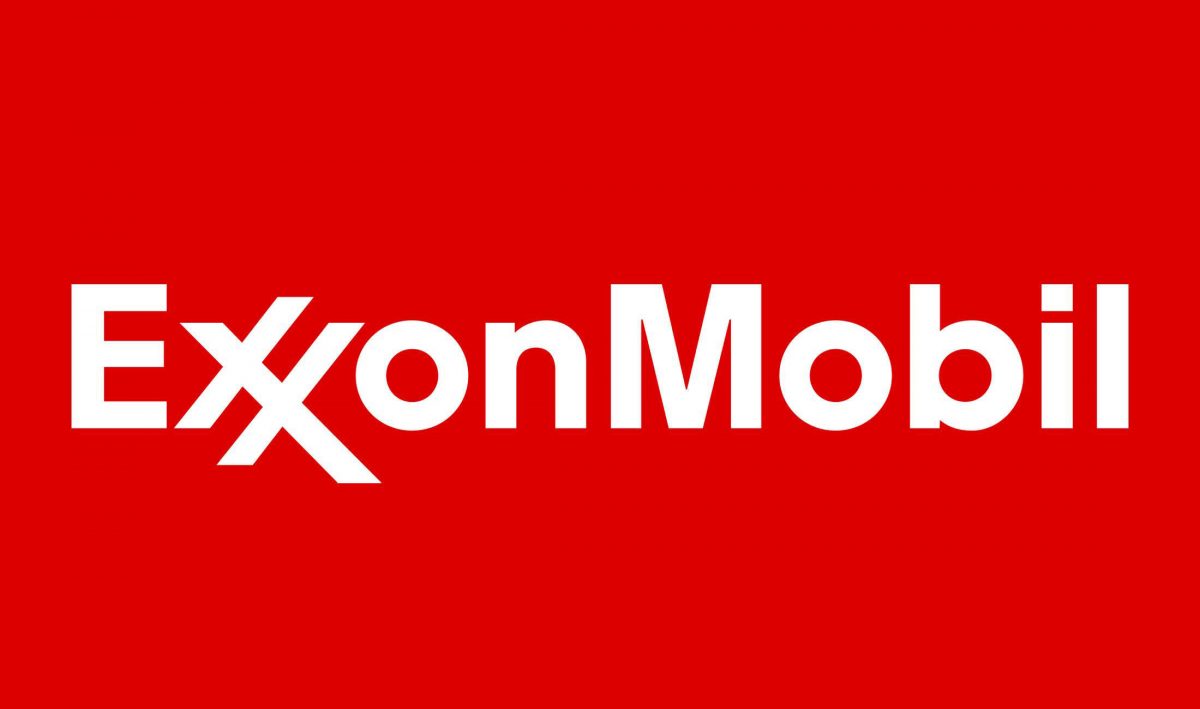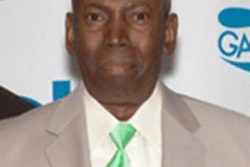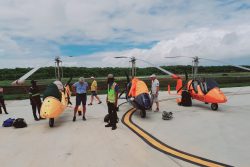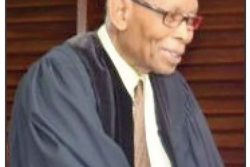The IHS Markit audit of cost claims by Exxon-Mobil and its partners for 1999 to 2017 found not only US$214.4M in disputed sums but that the oil companies operated in breach of the insurance requirement of the Produc-tion Sharing Agreement (PSA) as none of the three provided insurance certificates to show liability coverage.
Questionable insurance coverage in the case of an oil spill or other disaster has been a major issue of debate for years and neither ExxonMobil’s subsidiary here, Esso Explora-tion and Production Guyana Limited (EEPGL) nor the government has been been able to assuage public concerns.
“Insurance is required by the PSA, applicable laws, rules, and regulations and of such type and in such amount as is customary in the international petroleum industry in accordance with good oil field practice appropriate for Petroleum Operations. EEPGL stated that each partner, EEPGL, Hess and CNOOC carry insurance cover for their respective interest in the PSA. Copies of insurance certificates have not been provided by any partner, contrary to the PSA requirement,” the audit report released in March 2021 said.
And more than eight years after the first oil discovery and nearly three years after production began here, it is still unclear what is the status of insurance coverage for works in the Stabroek Block and if the requisite insurance certificates are in place, in keeping with the PSA.
The Environmental Pro-tection Agency (EPA) has said that each development in the block has coverage of US$600M per occurrence and government was up to the end of last year still negotiating a US$2B parent company guarantee. No documents have been made public on insurance coverage, although the issue of risk has been one of great concern from the date of the discovery of oil.
In 2019, under former EPA Head Dr. Vincent Adams, it was announced that EEPGL would provide US$2.5B in insurance from a British firm and that it and partners CNOOC and Hess would discuss how parent company liability would be furnished.
As per Article 20.2 of the 2016 PSA, the Con-tractor shall effect at all times during the term of the Agreement, insurance as required by applicable laws, rules, and regulations and of such type and in such amount as is customary in the international petroleum industry in accordance with good oil field practice appropriate for Petroleum Operations.
“Insurance should provide coverage for third Party Liability loss/damage exposure from operations, coverage for drilling activities and operators extra expense including exposure associated with controlling the well, re-drilling, pollution and cleanup.
“The Contractor shall effect at all times during the term of this Agreement, insurance as required by applicable laws, rules, and regulations and of such type and in such amount as is customary in the international petroleum industry in accordance with good oil field practice appropriate for Petroleum Opera-tions in progress in respect of but not limited to loss or damage to all assets used in Petroleum Operations; pollution caused in the course of Petroleum Operations for which the Contractor or the Operator may be held responsible; loss or damage to property or bodily injury suffered by any third party in the course of Petroleum Operations for which the Contractor may be liable to provide an indemnity pursuant to Article 2.4,” the PSA states.
Not provided
The Sunday Stabroek yesterday reported that the first audit of ExxonMobil’s spending for the Stabroek Block found that a whopping 12.8% of its US$1.67b expenses could be disputed by the Guyana Government as they were not allowable or did not have sufficient supporting documentation. The US$214.4M in dispute was derived from an audit of the entire sum and not an extrapolation from a sample.
The disputed costs fall into three main categories – Defined Costs for Removal (DCR), Inade-quate Supporting Docu-mentation (ISD) and Ministerial Approval Required (MAR). For each the sums were: DCR US$34M, ISP $179.8M and MAR US$0.27M.
With regards to the insurance breach, Exxon-Mobil, explained to the auditors that its two partners CNOOC and Hess were to take up their respective share of the insurance costs as per their percentage interest in the block but there are no records from the two companies showing that they had even started the process.
“Insurance certificates have not been provided to ensure that full coverage has been maintained throughout the audit period. Each partner procures coverage for its share of the Block interest, only EEPGL has provided details and invoices. It has not been able to confirm that Hess and CNOOC are meeting their responsibilities in this regard,” the report said.
For ExxonMobil’s subsidiary EEPGL, the audit highlighted that it had submitted some invoices for insurance premiums it had bought from a United Kingdom insurance company and that company was working with another to set the premium rates for works here.
The report said that ExxonMobil has maintained its 45% share of Control of Wells (CoW), Operators Extra Expense (OEE) and Third Party Liability (TPL) insurance coverage through a wholly owned subsidiary of ExxonMobil, Ancon Insurance.
“Although wholly owned, Ancon Insurance acts as a separate company at sufficient arm’s length from ExxonMobil. EEPGL provided evidence of Ancon Insurance consulting with an external insurance consultant, Jardine Lloyd Thompson, to set premium rates for Guyana,” the report pointed out.
Of the premiums for insurance coverage and invoices submitted and reviewed by the auditors, the report said that the total amounts paid by EEPGL fall within the expected industry norms.
A lump sum was added to the company’s cost recovery statement in 2017. But while it stated that it included insurance premiums paid by Hess, ExxonMobil did not provide information on what timeframes it covered, according to the IHS report.
As for ExxonMobil’s two other partners, it said that “It is not clear that Hess and CNOOC have maintained insurance coverage…or no premiums have been identified.” That there was no record of insurance by the coventurers, the report asserted, the Government of Guyana is left exposed and runs a risk should recovery of those sums ever be needed.
“The lump sum added to the Cost Recovery Statement in 2017 included insurance premium payments by Hess and CNOOC in 2015 but no information has been provided as to which timeframes these amounts covered. The General Ledger does not include any premiums paid by either party for 2016 or 2017. No evidence has been provided that either Hess or CNOOC are maintaining insurance cover and are therefore contravening the PSA requirements… Not having this insurance could leave GoG exposed to risks and costs that should be covered by the Co-Venture partners,” the report states.
Language
The issue of insurance and liability coverage had seen ExxonMobil’s Liza Phase 2 project in the Stabroek Block project hit a snag earlier in 2019, since the EPA wasn’t satisfied that the language used in the company’s application clearly stated the amounts to be covered above the insurance.
Having documents to support insurance had been underscored by former head of the EPA Dr. Adams when he had in February of 2019 reported that EEPGL submitted proof of insurance coverage of up to US$2 billion through a United Kingdom company but that the agency had asked for parent company coverage.
“The final permit was with the EPA for some months but we had one main issue and that is the liability to cover oil spills, etc. I have had several meetings with both [Head of the Department of Energy (DoE) Dr Mark Bynoe] and his staff and EEPGL and [EEPGL Country Manager] Rod Henson and his folks. The issue was liability to cover any type of spills, as I said. So Rod sent me correspondence to that issue. We wanted to see insurance coverage or liability transfer up to the parent company [ExxonMobil]. The stall in them getting it was because we weren’t convinced or saw satisfactory evidence presented for insurance that EEPGL on its own, through its assets, [could] take care of an oil spill or any accident of that magnitude with its current limited assets. The key was in the document clause it says ‘EEPGl will cover the liability,’ except it didn’t say by insurance or how. We wanted specificity as to how it would be covered,” Adams had explained.
“The one thing I have been asking is: ‘What is the international standard? And if that standard would be used here?’ We are not asking out of the ordinary. All we want to have is what are they required to do for the developed countries and we should not expect or will accept anything less. In the application for the permit, there wasn’t evidence presented to satisfy the requirements for insurance and the key was in the clause for liabilities where it said EEPGL will cover. EEPGL is a limited liability company, they do not have the assets to cover. They are a subsidiary of ExxonMobil as everyone knows. Verbally, I was given the assurance that ExxonMobil will pick up and they have insurance and all of that. But you have to understand that in business getting documentation is key. Yes, putting it in black and white. I wanted specificity as to how it would be covered by insurance. You say, ‘Oh, it will,’ then fair enough, show me in writing exactly how and state by insurance. I wanted documented assurance by seeing insurance,” he added.
Middle of that process
In relation to the reported proof of insurance coverage of up to US$2 billion submitted by ExxonMobil, Adams, a former manager at the United States Department of Energy, said it is known that in the industry, no insurance company would provide US$65 billion in coverage and it was why general industry standards were asked for. Coverage is first met by insurers in the event of a spill or other accident, and the company takes on the remainder.
He had explained that Henson had assured that the company would meet industry standards and had been cooperating with the EPA to submit documents to support its pledge.
Then in of 2019 this newspaper reported that the company and partners had secured the necessary local insurance for its operations here, even as the oil major’s Country Manager at time assured that it wouldn’t have to be used since there would be no oil spillage or accidents. “We have the required industry insurance and primary focus will be on safety. We are not going to have an oil spill,” Henson had told Stabroek News in an exclusive interview.
Adams had said that with the US$2.5B covered the partners would work out the percentage share of the additional coverage. “Well, you know that EEPGL has also committed to providing the additional liability coverage. The insurance covers US$2.5 billion but they are working out the mechanism for the parent companies covering that. EEPGL does not have the assets and that was why it had to be covered by the parent companies. They have made a commitment to do that and I am sure that this will be completed long before first oil,” he said.
“The second part is for them to submit how exactly the parent company will cover the over and beyond the insurance amount,” he added.
Henson had been asked for an update on the process of meeting insurance requirements and said that the company was working with government and the various agencies and would comply with all laws and was awaiting government’s input.
“We are in the middle of that process. We are working with the Bank of Guyana and the EPA and right now we have done everything we can do…we are all working. We absolutely intend to comply with the requirements. We are not dragging our feet at all…we will ensure the EPA is satisfied,” he said.
“The ball is not in our court for this. We have done everything we can do for that process,” he added. This process was not concluded as Henson left the post as ExxonMobil country manager. Adams himself was fired by the PPP/C government in November, 2020 and the insurance matter was left in limbo.










